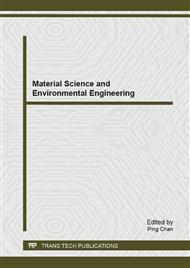p.286
p.291
p.297
p.303
p.308
p.315
p.318
p.324
p.330
Application of Neural Network in Bioactive Prediction of Inhibitor of Thymidylic Acid-Based Synthetase
Abstract:
Based on the molecular topology information and adjacency matrix, the 38 electrical state indices of molecules of inhibitor of thymidylic acid-based synthetase as five-membered heterocyclic pyrimidine derivatives were calculated to provide theoretical basis for molecular design of new drugs. By using variable regression method, the best subset of structural parameters of E1, E2, E7, E16 and E31 were optimized. When the five structural parameters were used as the BP neural network input neurons and the neural network structure of 5:3:1 was used, an ideal prediction model of biological activity was obtained. Its total correlation coefficient r and average relative error were 0.972 and 2.13%, respectively. The result showed that the biological activity and E1, E2, E7, E16 and E31 have a good non-linear relationship with the biological activity, and the results predicted by neural networks was better than that by multiple regression method. The test proved that the model had good robust and predictive capabilities. Our research would provide theoretical guidance for the development of new drugs of inhibitor of thymidylic acid-based synthetase with efficient and low toxicity.
Info:
Periodical:
Pages:
308-312
Citation:
Online since:
May 2014
Authors:
Price:
Сopyright:
© 2014 Trans Tech Publications Ltd. All Rights Reserved
Share:
Citation:


